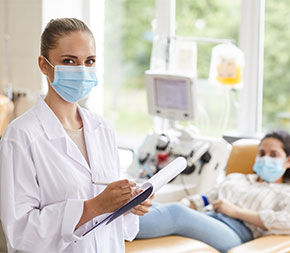The Of Northeast Medical Institute - New Haven Campus Phlebotomy Course & Cna Class
The Of Northeast Medical Institute - New Haven Campus Phlebotomy Course & Cna Class
Blog Article
What Does Northeast Medical Institute - New Haven Campus Phlebotomy Course & Cna Class Mean?
Table of ContentsNortheast Medical Institute - New Haven Campus Phlebotomy Course & Cna Class Things To Know Before You Get This3 Simple Techniques For Northeast Medical Institute - New Haven Campus Phlebotomy Course & Cna ClassFascination About Northeast Medical Institute - New Haven Campus Phlebotomy Course & Cna ClassThings about Northeast Medical Institute - New Haven Campus Phlebotomy Course & Cna Class6 Simple Techniques For Northeast Medical Institute - New Haven Campus Phlebotomy Course & Cna ClassThe Best Strategy To Use For Northeast Medical Institute - New Haven Campus Phlebotomy Course & Cna Class
The use of such tools need to be gone along with by other infection avoidance and control techniques, and training in their use. Not all safety and security gadgets apply to phlebotomy. Before choosing a safety-engineered gadget, individuals need to thoroughly examine available tools to identify their appropriate usage, compatibility with existing phlebotomy techniques, and efficacy in safeguarding personnel and patients (12, 33).For settings with low resources, price is a driving variable in procurement of safety-engineered gadgets. Where safety-engineered gadgets are not offered, experienced usage of a needle and syringe is appropriate.
In the blood-sampling area for an outpatient division or clinic, offer a comfortable reclining sofa with an arm remainder.
Indicators on Northeast Medical Institute - New Haven Campus Phlebotomy Course & Cna Class You Should Know
Make sure that the signs for blood sampling are clearly defined, either in a composed protocol or in recorded instructions (e.g. in a laboratory kind). Collect all the tools required for the procedure and area it within secure and simple reach on a tray or cart, making certain that all the things are clearly visible.
Where the person is grown-up and aware, comply with the steps laid out below. Introduce on your own to the individual, and ask the patient to state their complete name. Examine that the lab type matches the individual's identification (i.e. match the patient's information with the laboratory kind, to make sure accurate identification). Ask whether the license has allergies, phobias or has ever passed out during previous shots or blood attracts.
Make the individual comfy in a supine position (ideally). Location a tidy paper or towel under the patient's arm. Go over the test to be executed (see Annex F) and acquire verbal permission. The patient has a right to reject a test at any type of time before the blood tasting, so it is important to ensure that the individual has actually recognized the treatment.
Northeast Medical Institute - New Haven Campus Phlebotomy Course & Cna Class for Dummies
Expand the individual's arm and inspect the antecubital fossa or lower arm. Locate a blood vessel of a good size that is noticeable, straight and clear.
DO NOT insert the needle where capillaries are diverting, due to the fact that this boosts the chance of a haematoma. Locating the blood vessel will certainly help in determining the appropriate dimension of needle.
Haemolysis, contamination and existence of intravenous fluid and medicine can all alter the outcomes (39. Nursing personnel and physicians might access main venous lines for specimens complying with procedures. Samplings from central lines carry a threat of contamination or wrong laboratory examination outcomes. It serves, yet not optimal, to attract blood samplings when very first presenting an in-dwelling venous tool, prior to attaching the cannula to the intravenous liquids.
The 8-Second Trick For Northeast Medical Institute - New Haven Campus Phlebotomy Course & Cna Class
Permit the location to completely dry. Failing to enable adequate contact time enhances the danger of contamination. DO NOT touch the cleaned website; in particular, DO NOT position a finger over the capillary to lead the shaft of the subjected needle. It the website is touched, repeat the disinfection. Carry out venepuncture as adheres to.
Ask the individual to develop a clenched fist so the capillaries are much more prominent. Get in the capillary promptly at a 30 level angle or much less, and proceed to present the needle along the capillary at the simplest angle of access - CNA Courses. As soon as sufficient blood has been gathered, release the tourniquet BEFORE withdrawing the needle
The 8-Second Trick For Northeast Medical Institute - New Haven Campus Phlebotomy Course & Cna Class
Withdraw the needle gently and apply gentle pressure to the site with a clean gauze or dry cotton-wool sphere. Ask the person to hold the gauze or cotton woollen you can try this out in position, with the arm extended and increased. Ask the person NOT to bend the arm, due to the fact that doing so triggers a haematoma.

The Definitive Guide for Northeast Medical Institute - New Haven Campus Phlebotomy Course & Cna Class
Do not press the syringe bettor because additional stress increases the threat of haemolysis. Where possible, maintain the tubes in a rack and move the rack towards you. Infuse downwards into the suitable coloured stopper. DO NOT eliminate the stopper since it will launch the vacuum cleaner. If the sample tube does not have a rubber stopper, inject extremely slowly into television as minimizing the pressure and speed utilized to transfer the sampling decreases the risk of haemolysis.

Report this page